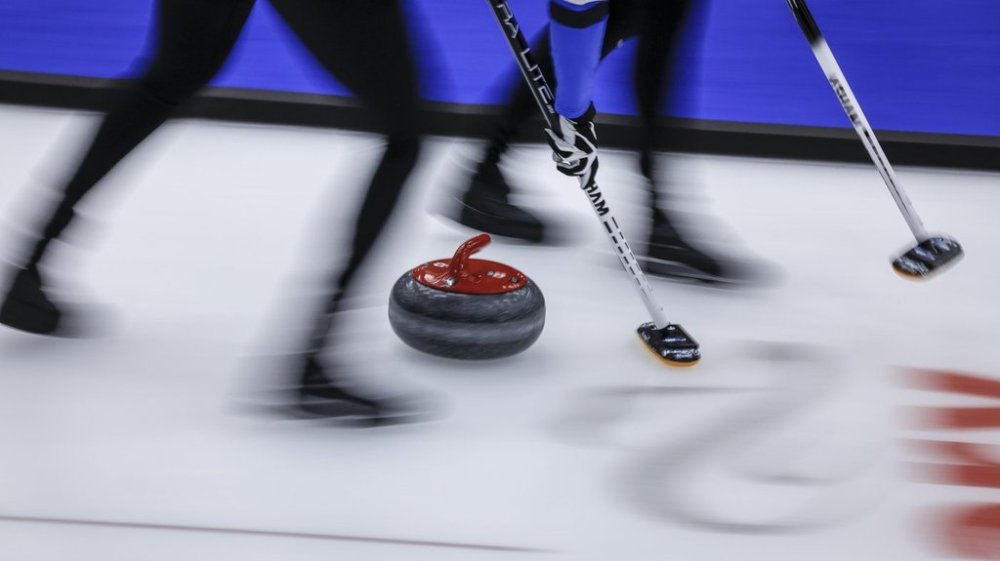Rock League walks back travel plans for pro curling startup, won’t go overseas
Advertisement
Read this article for free:
or
Already have an account? Log in here »
To continue reading, please subscribe:
Monthly Digital Subscription
$0 for the first 4 weeks*
- Enjoy unlimited reading on winnipegfreepress.com
- Read the E-Edition, our digital replica newspaper
- Access News Break, our award-winning app
- Play interactive puzzles
*No charge for 4 weeks then price increases to the regular rate of $19.00 plus GST every four weeks. Offer available to new and qualified returning subscribers only. Cancel any time.
Monthly Digital Subscription
$4.75/week*
- Enjoy unlimited reading on winnipegfreepress.com
- Read the E-Edition, our digital replica newspaper
- Access News Break, our award-winning app
- Play interactive puzzles
*Billed as $19 plus GST every four weeks. Cancel any time.
To continue reading, please subscribe:
Add Free Press access to your Brandon Sun subscription for only an additional
$1 for the first 4 weeks*
*Your next subscription payment will increase by $1.00 and you will be charged $16.99 plus GST for four weeks. After four weeks, your payment will increase to $23.99 plus GST every four weeks.
Read unlimited articles for free today:
or
Already have an account? Log in here »
The Curling Group is walking back some of its initial travel plans for the professional Rock League that’s set to debut this spring.
TCG, which also owns the Grand Slam of Curling circuit, has decided it will not hold events in Europe as originally planned when its six-week debut season begins in April.
“We’re going to keep it in North America this year,” said Nic Sulsky, chief executive officer of The Curling Group.

The multi-format competition will feature six global franchises. Ottawa’s Rachel Homan is captain of Canada 1, and Brad Jacobs of Sault Ste. Marie, Ont., is captain of Canada 2.
When The Curling Group launched plans for Rock League last April, it planned to hold events in Canada, the United States and Europe. Sulsky said venue availability was an issue for the planned European stops.
“I’ve been very vocal and very aggressive around how big we want to grow the sport and how we want to take the sport all over the world,” he said in a recent interview from Stateline, Nev. “But the reality is logistics — the boring stuff — the logistics sometimes take a little bit more time.”
The Curling Group is planning to roll out Rock League details for the first two seasons in mid-December, including locations, team names, dates and rosters, Sulsky said.
Other previously announced captains include Scotland’s Bruce Mouat (Europe 1), Switzerland’s Alina Paetz (Europe 2), American Korey Dropkin (U.S.) and Japan’s Chinami Yoshida (Asia/Pacific). Each team will have five men’s and five women’s curlers.
The Rock League info release will come after the Nov. 22-30 Montana’s Canadian Curling Trials in Halifax and on the eve of the Dec. 16-21 HearingLife Tour Challenge in Saskatoon.
“The reality is Rock League is going to be a very big change for the curling world, not just for the fans, but for the athletes,” Sulsky said. “And team dynamics are really important in an Olympic year.
“So we didn’t want there to be any impact on teams as they’re competing in the Trials.”
The Saskatoon stop on the circuit will be the fourth of five Grand Slam events in the Olympic season. There have been some hits and misses on the series so far this year, the second full season under The Curling Group ownership.
The series added a wheelchair curling invitational, a military invitational and more Tier-2 competition to the circuit. TCG also recently launched the Rock Channel streaming service.
However, television ratings have slumped at times and attendance woes that have plagued the series for years continue to be an issue.
The finals of the late-September AMJ Masters averaged about 123,000 viewers while the GSOC Tour Challenge finals averaged about 202,000 on Sportsnet, a network spokesperson said via email.
Those totals were both lower than the season-ending Players’ Championship finals last April (225,000 average).
The schedule has also not been kind. The Grand Slam’s first foray outside of Canada came a week before the U.S. Olympic team trials.
The only American presence at the Kioti GSOC Tahoe last week was from a makeshift foursome that included Jason Smith and former NFL player Jared Allen, an initial investor and strategic adviser for The Curling Group. Entered as a sponsor’s exemption, the rink went 0-4 and missed the playoffs.
Attendance numbers weren’t released but the 5,000-seat Tahoe Blue Event Center looked virtually empty for some draws. Things did pick up a bit on the final weekend when Homan won the women’s final and Mouat took the men’s crown.
“The lack of Canadians travelling down here, I think, has been compensated by just the incredible energy on the ground,” Sulsky said. “The fans here are having so much fun. Would it have been great to have a sold-out arena? Absolutely.
“But the energy that these fans have brought has more than compensated for the fact that we don’t have a fully sold-out arena. We’re all just over the moon with how this event has come out.”
The second Grand Slam also went up against Toronto Blue Jays playoff coverage, which set viewership records throughout the month on Sportsnet. Expanded baseball coverage during the playoffs bumped some curling draws into the wee hours on tape delay.
The average audience for each draw of the Tour Challenge — which was held during the American League Championship Series between Toronto and Seattle — was 117,000, according to Sportsnet.
A network spokesperson declined to provide ratings for individual draws. Ratings for the Tahoe event weren’t immediately available.
The Grand Slam season will end with the Jan. 6-11 Players’ Championship in Steinbach, Man.
This report by The Canadian Press was first published Nov. 13, 2025.


